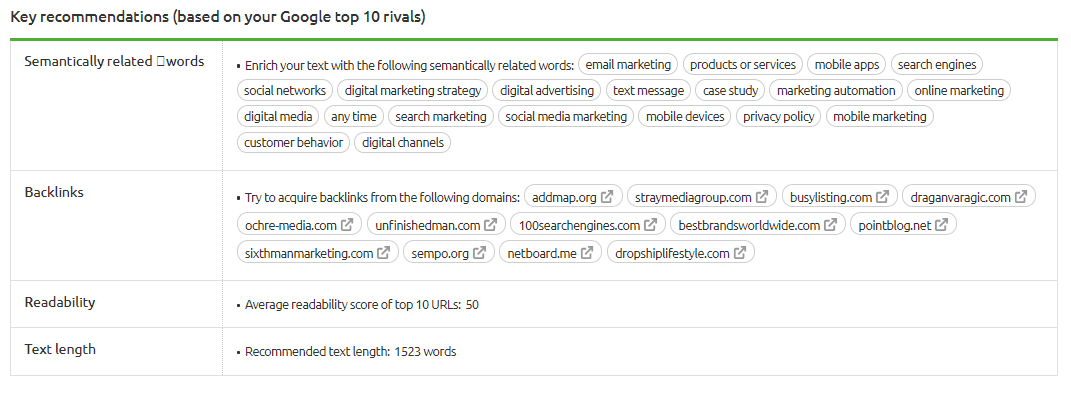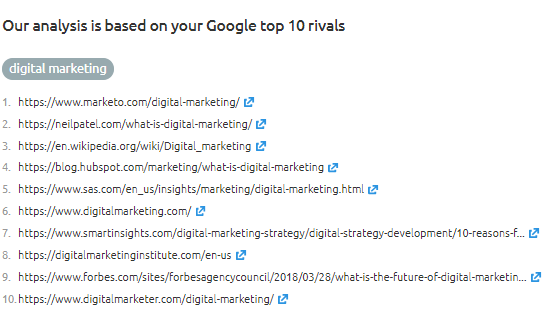It doesn’t matter if you are a seasoned professional, a market leader, or an industry newcomer, we all have experienced “dry” periods. As hard as we try, we can't come up with a fresh new idea for our content calendar. Creative blocks are not an uncommon phenomenon, and when they appear, they can have a disastrous effect on your constructive capabilities and morale.
Here are 10 simple methods aimed at helping you overcome your “writer’s block” and start creating fresh new creative content for your audience to enjoy.
1. Constantly Monitor Trends
As content creators, it's important to always monitor trends within your industry or niche. These trends can potentially reveal what is new or going viral at a certain period in time, as well as people’s interests, intentions, and behaviors.
It goes without saying that constant monitoring of trending topics is a great first step in your brainstorming process. This can be done manually by scoping out the behavior and interests of the audience in your social channels and performing a Google search based on your findings.
While the above will yield some results, it's often a long and copious process. Thankfully, there are tools you can use to make monitoring trends a much more effective and efficient process.
A) BuzzSumo
If you ever find yourself struggling to come up with a fresh idea for content creation, BuzzSumo can help you by identifying important or trending topics for a given keyword or niche. This tool can also provide insight regarding competitors and influencers, allowing you to see whom your prospects are listening to, what they are listening to, and through which channels. All in all, BuzzSumo is an exceptional tool if you are interested in significantly reducing the time needed for brainstorming and research.
B) Google Alerts
Another exceptional tool for monitoring trends in a certain niche you're interested in is Google Alerts. Simply enter a keyword of interest, or one you're considering basing your next content piece on, and set up an alert to be sent to your inbox. Proper utilization of this tool will help you stay informed of what people are talking about within your industry, giving you more ideas for future topics.
2. Ask Your Audience What They Would Like To See From You
Oftentimes, making your audience part of your creative process can yield great results. Your audience knows exactly what they want to see, better than anyone else in fact. Try engaging with them; ask them about any topics of interest. You can simply ask "which one of our posts was your favorite and why?", and if they have any questions, you're there to answer. For optimal results make sure you use the social platform your audience is most active on.

Directly engaging with your audience will not only benefit you in terms of coming up with topics for future posts, but it will also greatly enhance your image. By connecting with your audience and asking for their opinion, you're showing them that you don't view them purely as your customers. They'll feel that you do in fact care about them and that their opinion is important, valued, and taken into consideration when creating content for them.
3. Monitor FAQ websites
Websites dedicated to frequently asked questions, such as Quora, can be an amazing source of potential topics to base future posts around. Monitor these sites for questions regarding your niche you feel confident answering. If such questions show up here, chances are there are many more people with similar inquiries. For a more in depth look on Quora you can check out this video.
Seek out industry relevant questions that are most frequently being asked and use the theme to fuel future content. Moreover, directly answering (or even better, providing a link to an article you wrote redirecting viewers to your blog) is an exceptional way to build your authority.
4. Monitor Social Media
Apart from being a great source to gather information regarding trending topics, social media can also provide substantial insight concerning your audience, industry influencers, and even competitors. By appropriately monitoring and utilizing your social channels, you will be able to gather a multitude of potential topics to enrich your content calendar. Such insight can be gathered by monitoring:
- What influencers are sharing and posting about
- What your competitors are posting about
- What your audience shares, likes, and comments on
- Whom your audience is following
5. Keywords
Sometimes you may have a general topic in mind, but you may be lacking a “focus”. In such instances, the best thing to do is to utilize the methodology and tools you would use when brainstorming for, and analyzing, winnable keywords.
- Enter your keyword or idea into Google’s search bar and extract any potential ideas from the recommended results provided in the drop-down list.
- Utilize free tools such as answerthepublic.com and soovle.com which can provide a plethora of related topics for you to build upon.
- Make use of Hubspot’s “Topic Generator” feature which provides you with potential ideas related to the terms you provide.
Finally, you can take advantage of SEMrush’s “Keyword Magic” feature. This will not only provide you with relevant recommendations but it will also allow offer analytical insight for you to determine if the keyword (and subject) will be “winnable."

Speaking of keywords, SEMrush has another very interesting tool called the "SEO Content Template." What this essentially does is it provides recommendations on related terms, similar topics, and content size.

Finally, this tool will also provide you with a list of top performing URLs using the certain keyword or topic you are interested. This can easily provide insight as to what your competitors are talking about, they type of content they are creating, and it can even help spark some creative ideas for your next post.

6. Use A Calendar
While this may be fairly obvious, it's surprising how many content creators seem to neglect simply using a calendar to help them in their creation process. Even if you're not at a creative impasse at the moment, it is wise to look at your content creation on a macro level and create a content calendar for a month, or even a year ahead of time. Focus on seasons, important holidays, and large events and see how you can take advantage of these dates to build future content.
7. Use Real Life Experience
Oftentimes the best kinds of content are based on real-life events and experiences. As an SMB owner and marketer, you've had your share of failures and challenges throughout your career. Perhaps you could create posts offering insight on how you managed to overcome these obstacles. Such posts are not just insightful articles for your content calendar, they also provide great value for your audience, and especially those facing the same issues you once did. This makes your content much more humanizing and personal helping readers empathize and relate.
“But what if I don’t have any noteworthy success story to share with my audience?”. You may not (yet), but there is undoubtedly someone you know that does. Ask friends, family members, professors, mentors, or even influencers for notable professional experiences, and create an article base of those ideas.
8. Create A Brainstorming Group
Multiple brains are without a doubt more effective (and efficient) than one. Try to gather members from within and outside of your industry, and form small teams of no more than 4-5 members.

At this point, you may be wondering why we recommended including members irrelevant to your industry. While this may seem counter-intuitive at first, including people with little to no familiarity with your niche can bring a fresh perspective to the brainstorming session. These individuals are often without preconceived notions that will limit their creativity when analyzing certain industry-related topics.
9. Introduce Guest Posts To Your Content Calendar
Introducing a guest post in your content calendar can be beneficial for two reasons.
- They can provide a much-needed break that will help you get your creative gears running smoother at a later time.
- The guest article can spark a plethora of ideas and perspectives that can be used to create potential future posts.
- It opens an opportunity to gain a backlink (and we all know how important that is to SEO!)
Remember, if you do choose to include a guest post, make sure the author is an authority within your industry or niche. Stay away from creators that will offer little, to no value to your blog and audience.
10. Repurpose Previous Posts
If all else fails, you could always repurpose past content pieces. Before doing so, you will need to determine which posts are worth being repurposed.
- Typically evergreen content pieces are the safest for repurposing as they will always be relevant and provide value to your audience.
- Try to identify your most popular posts with the highest engagement. If these posts were well received the first time around, chances are they will be again.
- Find outdated posts or content that you can expand upon by giving more updated and relevant information
Five of the most popular methods of repurposing content include infographics, slideshows, e-books, podcasts and videos, and email lists.
Did you find this post insightful? Do you have any questions? Let us know in the comments below!
